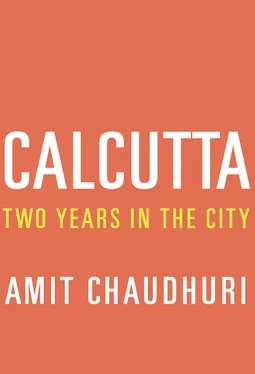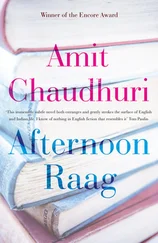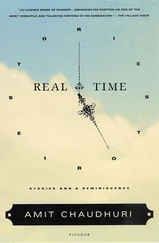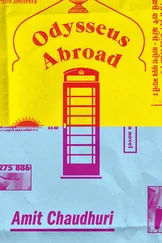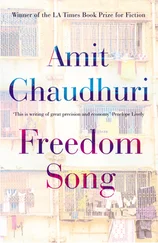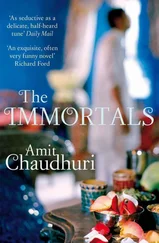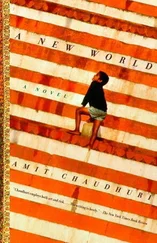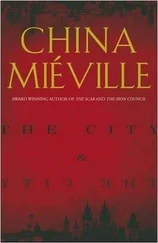The Pujas ended, I kept calling Tim Grandage’s flat and speaking to the caretaker, but Tim showed no signs of returning. Meanwhile, Lakkhi’s hours were becoming unacceptable, she was arriving close to late lunchtime, and was unrepentant and had no explanation but “I’m thinking of giving up work. I can’t take it any more — after all, I’m fifty years old.” “You’re more than fifty,” I informed her. “ I’m forty-nine.” I was secretly astonished at how old I was. I would probably die one day in Calcutta — which, anyway, was as I’d planned it: that I mustn’t, by mistake, die abroad but live and spend and maybe bring to a close the second half of my life in India. It just happened that India, at this point of time, was Calcutta. Maybe most of us, without knowing it, have plans of this kind. I’m reminded of César Vallejo, who states it baldly, as a prophecy: “I will die in Paris, in a rainstorm, / On a day I already remember.” That second line—“On a day I already remember”—is shrewd, and it speaks to exactly what I have in mind — that, when it comes to such matters, the future and the past, memory and speculation, are hopelessly mixed up and devoid of chronology. Vallejo actually managed to die in Paris despite being expelled from France in 1930, eight years before his death. But his poem is meant to voice the classic melancholy of the exile with finality — for Vallejo was born in an impoverished Peruvian town. In my case, my aim — whether or not it works out — is to eventually draw my days to a close at home. After twelve years in Calcutta, I realise this notion of “home” is an invention: that, though I was born in Calcutta, I didn’t grow up here, and don’t belong here. Each year, I suspect I’ll begin to understand this city better, be more at ease with it: and every year I find this is less true.
When I think of Lakkhi’s behaviour before and during and after the Pujas, her dishabille entrances, infuriated and infuriating, her grandchild in tow, I wonder if she was telling us, in a sort of code, of her disenchantment. She knew Raja had begun to interrupt my writing and tried to enforce a stricter demarcation for him where kitchen and drawing room and my room were concerned. Then, just as I was warily testing these arrangements, she stopped bringing him. There was no busybody to contend with! I was relieved, because I’d begun to think Raja would be a nuisance for the foreseeable future; but, given the grass is always greener on the other side, I was, in a negligible way, bereft. At times of my choosing, I wanted to be interrupted by Raja; just as there are occasions when a cancelled trip answers a secret prayer. “My friend will be back soon,” I told Lakkhi. “You should let me know if you still want me to talk to him about the school.” But she’d found a school in Subhasgram, she said, where he’d be looked after night and day: a better deal, given Raja’s unmindful — in more than one sense — mother. In this way, I held steadfastly to my own, on the whole unbroken, record — of being unable to intervene positively even when I wanted to.
About a week later, a young, distraught maid who’d just taken up work confessed to us of her own volition that Lakkhi had persuaded her to place a plastic bag with pieces of fish from the freezer behind the fire extinguisher near the lift, half an hour before her departure to Subhasgram, and had, since then, been asking her to do it again. We were gripped by a sense of disbelief at Lakkhi’s ingenuity and by a surge of vengefulness. But we knew we needed to strategise — besides, there was a man in the house who was pretty old and had special dietary needs. So we said nothing and only marvelled when Lakkhi came in. But she had her informants and found out she’d been snitched on. Her mood deteriorated. Without the fish being openly discussed, Lakkhi stopped coming, except once, dourly, like one betrayed (as she had been), to collect her dues.
Getting a substitute wouldn’t be easy, but we took up the challenge.
Twice a year, I’d think, with a start, that I hadn’t been to see Mini mashi for months. It was like an email I had to reply to — the memory of it jolted me at the wrong moments: say, after I was in bed, and had switched off the lights. When I woke up, the thought was gone. Then, when there was a lull in the monsoons of 2011, my mother got a phone call saying Mini mashi had had her third stroke, and, increasingly stingy with time though I’ve become, I knew the journey couldn’t be postponed.
These strokes occurred at astrological intervals, every few years. Each time, they took from Mini mashi’s learned vocabulary in Bengali a few more words. They were tectonic and decisive, making their presence felt indisputably in her and Shanti mashi’s small flat, like a supernatural being. The strokes weren’t silent and insidious, like the ones that pursued my father, leaving his face and features unchanged, transforming him from within.
She’d been shifted to the intensive care unit of a nursing home in Shobhabazar, and my mother and I decided we must set out in time to catch the visiting hours. She was my mother’s oldest living friend — they had been thick with each other in Sylhet — and they were also very, very distantly related: technically, she did qualify as my maternal aunt — or mashi .
Shobhabazar is in North Calcutta; so is the narrow lane in which Mini mashi and her elder sister lived doggedly in a government flat, a five-minute walk from the Tagores’ house in Jorasanko, two minutes from Mallickbari or the Marble Palace, and not far at all from Mahajati Sadan, the playhouse; an area as littered with the relics of history as Shobhabazar is thriving (besides still being home to the obscure mansions of erstwhile rajas and landlords) with stalls selling wedding cards, saris, dress material — but predominantly wedding cards.
North Calcutta is not just a geographical location; it is, in fact, the other Calcutta. That is, it’s approximately what’s left of the old or “black” town — which was, with the exception of a few areas in the south, the great city of the nineteenth century — the environs in which all the cultural innovations of the Bengal Renaissance took place. When people refer to “Calcutta” or “Kolkata” today, though, they mean the south, and have meant it for some decades, as urban life flowed and shifted in that direction, and, from the mid-nineties, the merciless property boom extended deeper and deeper southward. No wonder it took me years to visit Mini mashi, on what turned out to be just a few days prior to her death; it wasn’t so much the distance, which, by the standards of contemporary cities and their suburbs, is moderate to small (a forty-five minutes to an hour’s drive in the traffic). It may have had to do with this sense of having to push in the opposite direction, of bracing myself to travel against the current.
* * *
You say, What’s this Renaissance you’ve kept mentioning? Is it true Bengal had a Renaissance — if that’s so, what was its nature? Where are its monuments, its landmarks, its cathedrals? Does it have a Sistine Chapel?
Reformists like Keshab Chandra Sen, nationalists such as Bipin Chandra Pal, and the Hindu revivalist Swami Vivekananda had begun by the late nineteenth and early twentieth centuries to speak of the naba jagaran or “new awakening” that had occurred in Bengal, and call it, in English, the “Renaissance.” But the person who probably gave the term its admittedly short-lived academic aura was the Marxist historian Susobhan Sarkar, in his brief tract from 1946, Notes on the Bengal Renaissance , where its provenance, characteristics, and canonical moments were duly recorded.
Читать дальше
